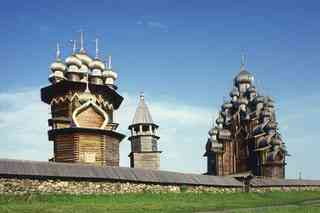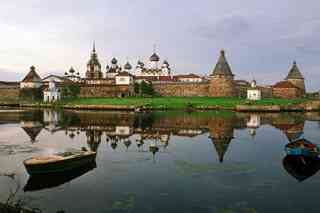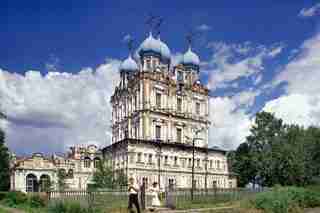See the Amazing Architecture of the Remote Russian North

dam-images-books-2015-architecture-end-of-the-world-architecture-at-the-end-of-the-earth-01.jpg
In the new book Architecture at the End of the Earth (Duke University Press, $40), historian and photographer William Craft Brumfield explores the diversity of buildings in the Russian North, a remote region near the White Sea, capturing structures that range from palatial cathedrals to simple log cabins. Pictured here are the Church of the Transfiguration (left) and the Church of the Intercession (right) on Kizhi Island, both from the 18th century.

dam-images-books-2015-architecture-end-of-the-world-architecture-at-the-end-of-the-earth-02.jpg
Brumfield photographed the Transfiguration Monastery on Great Solovetsky Island just after a rainstorm.

dam-images-books-2015-architecture-end-of-the-world-architecture-at-the-end-of-the-earth-04.jpg
Also located in Solvychegodsk, the Cathedral of the Presentation was built between 1689 and 1693.
dam-images-books-2015-architecture-end-of-the-world-architecture-at-the-end-of-the-earth-05.jpg
Joseph Stalin lived in exile in this log house in Solvychegodsk from late 1910 until July 1911. Today, it is part of the Political Exile House Museum.
dam-images-books-2015-architecture-end-of-the-world-architecture-at-the-end-of-the-earth-03.jpg
Construction on the Cathedral of the Annunciation in Solvychegodsk was completed in the early 1570s. The church was consecrated in 1584.
dam-images-books-2015-architecture-end-of-the-world-architecture-at-the-end-of-the-earth-06.jpg
The Church of the Ascension is located in Veliky Ustiug. Built in 1648, the cathedral reflects the ornamental style prevalent in Moscow at the time.
dam-images-books-2015-architecture-end-of-the-world-architecture-at-the-end-of-the-earth-07.jpg
The Church of the Dormition (left) and the Church of St. Athanasius the Great in Varzuga were built in 1854 for winter services.